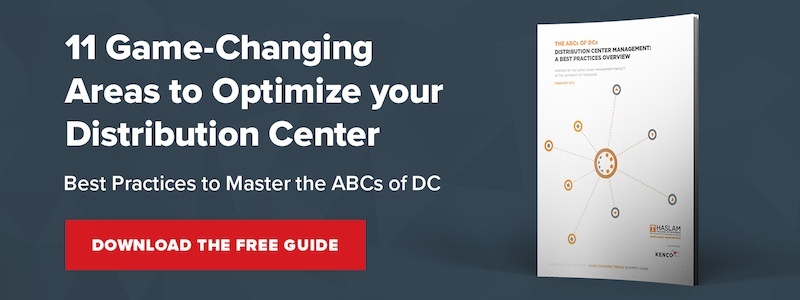
There's always a small bit of joy I get when I walk into my favorite coffee shop, and without saying anything the barista asks if I'm getting "the usual." It's familiar. It's personal. And I know my favorite barista is going to give a little extra love to my latte.
Some may say I go to this coffee shop a little too often (and maybe I do), but the consistent face-to-face interaction at the shop has made our relationship better. I rely on him for a great start to my morning, and I'm always confident I'm going to have a great experience when I am there.
Working with your 3PL should be no different. Logistics solutions can get technical and complex quickly, but by working with a human point of contact you trust the technical and complex, can be remedied quickly. This person should be someone who represents the company, and who you can build a real, trusting relationship with. You want it to be familiar. Personal. And know their team is going to give a little extra love to your business.
You can use strong cultural fit and a great working relationship to your business's advantage. To optimize your 3PL warehouse relationships, we recommend you focus on these 3 areas:
1. Managing Your Contracts
Full of legalese and jargon, contracts may not be the most exciting part of a business relationship---but they inevitably set the tone of your relationship moving forward. Any good contract should ensure a fair balance between the shipper and the 3PL, though this is more easily said than done.
The language of the contract is obviously important, and those partners who carry out the negotiations are equally as important. Most companies choose their procurement area to take care of contract negotiations. However, we suggest using a team of procurement as well as functional owners to negotiate contracts.
We found this cross-functional team to be much more effective for negotiating contracts that truly benefit the shipper as well as the 3PL. Procurement is great at negotiating deals and reaching the best price possible, but in our experiences, having a cross functional team to enable procurement early in the process could help avoid spurring future frustrations. Involving the cross-functional team even earlier - during the RFP planning and evaluation process - can further prevent frustration and disjoint downstream as you begin to commercialize the agreement.
Regardless of who negotiates the deal, it's key to make sure you are following your procurement's best practices and working collaboratively with the functional owners for an ideal contract.
2. Know Your Performance Measurements
Creating a performance program that provides great insight and actionable data involves both determining what metrics you will use when measuring performance and how you will score the effectiveness of performances. Ideally, the appropriate metrics should be determined through a collaborative process with the supplier and 3PL. And, most importantly, don't forget to define what success looks like when it comes to your metrics.
Typically, you will look at two types of categories your metrics will fall under: Service Level Agreements (SLAs) and Key Performance Indicators (KPIs). SLAs include metrics that are controllable by a supplier and contractually documented in the 3PL contract, while KPIs and desired outcomes are more strategic and broad in nature.
It's important to note: metrics should be clear, include definitions on how to be calculated, show where the data comes from, and have a standard/target to be measured against.
If you're looking for help with what to measure, The Warehouse Education and Research Council (WERC) provides a list of popular warehouse benchmarks for the most common warehouse metrics (you can check out the white paper here).
Regardless of what you choose to measure, we recommend keeping the following best-practices in mind when establishing your performance measurements:
- Provide incentives: Research has shown incentives, rather than penalties, generate better supplier outcomes. Penalties can become counterproductive if each side spends time justifying their mistakes. If you're thinking of financially linking something like this, we suggest to look for ways to mutually improve performance.
- Develop a scorecard: Once you've define your metrics, a scorecard can help you track results. A scorecard typically combines SLAs and KPIs to measure overall success of the business and relationship. For best results, make sure the metrics on the scorecard are simple and limited.
- Use proactive problem-solving: Surprises kill performance. Predicting future problems and taking corrective action quickly will drive superior results. You can do this by building a strong measurement system to help provide timely feedback.
- Collaborate: Great performance is almost always the result of a collaborative effort. Finding the root cause of any service failure is easier when both the supplier and 3PL are working toward the same goal. The more robust your business relationship and collaborations, the more robust your performance measurements can be.
3. Master Business Governance
Proper governance of a 3PL relationship is critical. When good governance is in place, your 3PL provider has a blueprint for consistent, flexible, and transparent management for day-to-day operations.
So how do you create good, proper governance? Build an agreement that respects the culture and strengths of both your company and the 3PL. As you work your way through your governance plans, think of how you will manage the over-arching relationship, continuous improvement, transformation management, and compliance requirements that are essential to your success. I know it sounds like a lot, but establishing goals and guidelines in each of these areas will save you trouble in the long run.
Now that you know what to work on when building a governance plan for your relationship, we have to move on to how you should manage it. Relationship management really comes down to operational alignment.
Creating a structure that describes how individuals work between your company and 3PL is the first step to defining your governance structure. Less strategic relationships may be simple and only involve an account manager working with one person at your company. A more strategic and tactical relationship may use a number of interfaces. You may have a finance person aligned with a finance person, or an IT person aligned with an IT person, and so on.
Just remember, your governance structure should be tailored to the needs of your relationship---if your supplier relationship is larger and more complex, the more effort you should expect to allocate to governance.
To Sum It All Up
Though optimizing your relationship with a barista shouldn't necessarily be a part of your daily goals, building strong relationships that benefit both you and your 3PL should. If not for the little bit of "extra love to your latte," then for the increasing efficiencies both of you will see.



